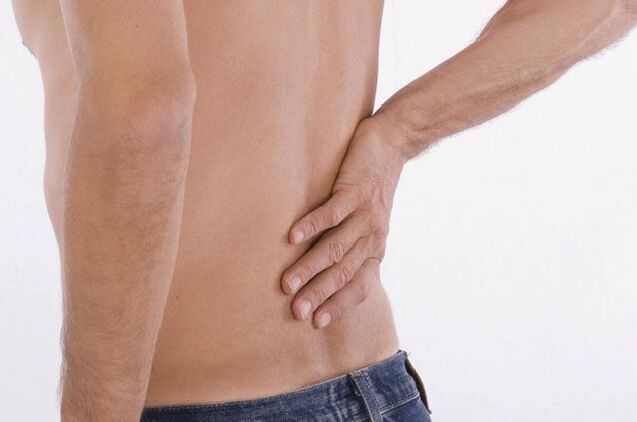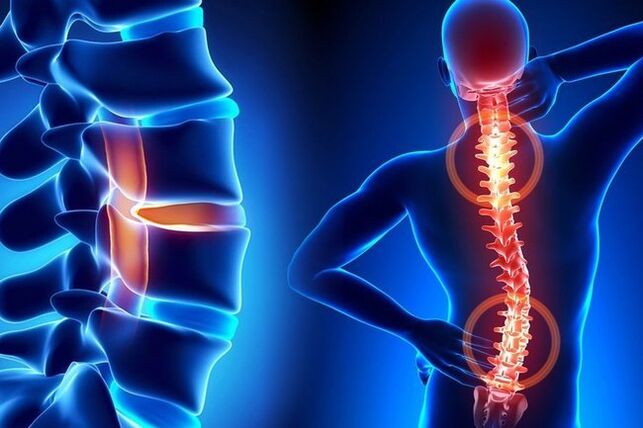Lumbar osteochondrosis is a fairly common disease. However, in spite of this, it is not recommended to let his treatment go with the flow, as this will lead to serious consequences, including disability. The older you are, the greater your chance of suffering from diseases such as lumbar osteochondrosis.

Unfortunately, elderly people with this disease face an average of 90% of cases. As for the special risk groups, it includes those who do not have enough mobility and an active lifestyle. You see, such people now account for the majority.
The main cause of lumbar osteochondrosis
In the case of uneven distribution of chin and trunk muscle load, the intervertebral disc deforms and protrudes between the vertebrae. This can cause compression of the spinal nerves. The result is the so-called nerve root syndrome, which is characterized by back pain and markedly decreased lumbar mobility.

The wedge shape of the back of patients with lumbar osteochondrosis does not occur suddenly, so experts recommend starting to solve the problem before it becomes serious. Therefore, it makes sense to test whether your body has any problems.
The main symptoms of osteochondrosis are as follows:
- Traction pain in the waist (in the first stage of the disease, the pain is not very strong, but it will increase over time);
- Limited waist movement;
- Problems when walking;
- Numbness in limbs.
Due to the compression of the intervertebral blood vessels, visceral diseases may even occur. This can happen if the disease is seriously neglected. If you observe any of the above symptoms, it is strongly recommended that you immediately seek help from a specialist: a neurologist or therapist. The doctor will prescribe a comprehensive treatment to effectively prevent the condition from getting worse.
How to deal with an acute attack of osteochondrosis
If your back twists in an unexpected way at some point, you should know what specific actions to take in anticipation of having to call the ambulance team. Therefore, we are discussing the following operations:
- Under no circumstances should you help a person to straighten, because such behavior will not only trigger a new episode of pain, but also cause greater displacement of the vertebrae, which can lead to paralysis;
- If possible, help the patient to lie on the bed or sofa;
- Do not touch the painful back area;
- The victim needs to take an anesthetic that can relieve pain;
- If the pain syndrome is moderate, the lumbar area should be treated with anesthetic ointment.
Treatment characteristics of lumbar osteochondrosis
The main task that must be solved to treat lumbar osteochondrosis is to eliminate pain. After this, some measures should be taken to restore mobility and eliminate the cause of spinal nerve compression. In principle, the goal of treatment in any situation is to make the patient fully recover. In advanced cases, we are talking about inducing stable remission by restoring most motor functions.
Treatment can be conservative and rapid. Conservative methods for the treatment of lumbar osteochondrosis include a course of analgesics, as well as systemic intensive and anti-inflammatory treatments. Surgery is only performed if there is a real risk of paralysis in the context of significant disc displacement. During the operation, the hernia is removed, the intervertebral disc is replaced, and the bone growth, adhesions and scars on the vertebrae are removed.
In some cases, the use of folk remedies may be a very effective method. For example, you can make dressings based on medicinal materials. It is also useful to wrap the waist area with a scarf or scarf made of natural camel or any other wool.
The characteristics of osteochondrosis rehabilitation
In order to consolidate the results of the treatment, it is strongly recommended to take very serious rehabilitation measures. It is best to do it in medical and physical training centers that are open in almost all cities during remission. The rehabilitation plan is formulated for each individual individually, and the complex is selected according to individual circumstances. It includes various treatments, including exercise therapy, massage, and physical therapy.



















